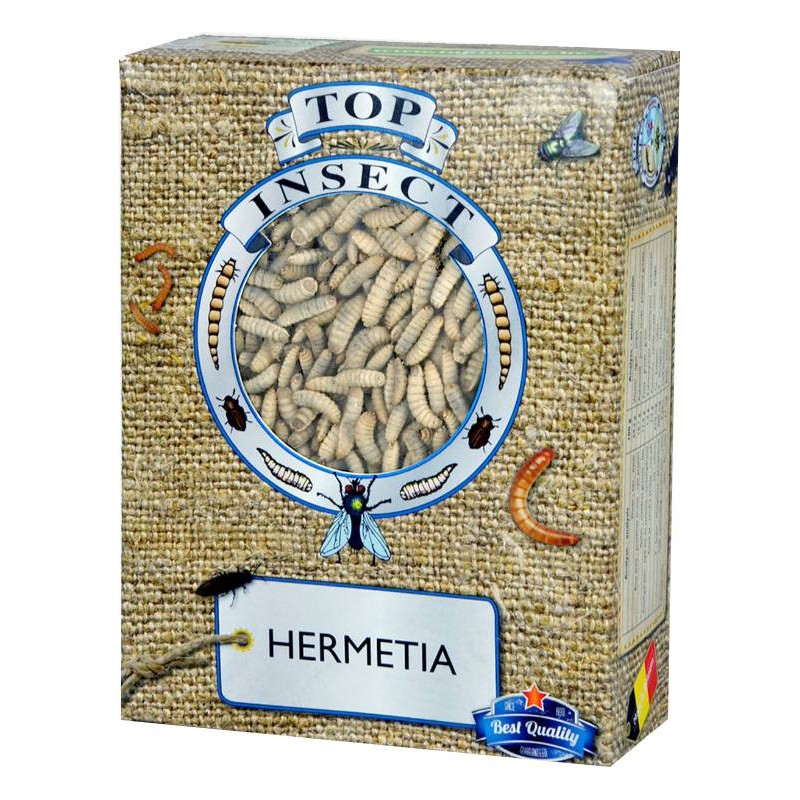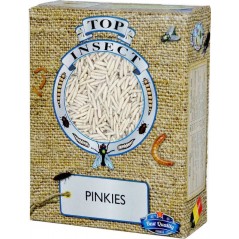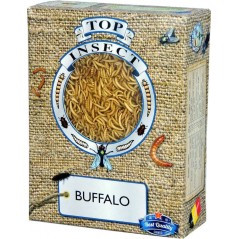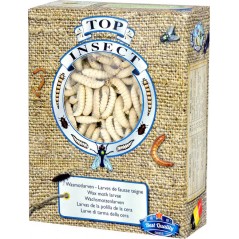


Ornibird.com, le spécialiste pour vos Oiseaux et Animaux !
Ornibird.com, le spécialiste pour vos Oiseaux et Animaux !



(€20.50 kg)
"The Hermetia illucens "is the scientific name for the" black soldier fly black ".
Original, the soldier fly black comes from the tropical and subtropical zones of North America and of the South, but today it is almost present in all the warmer parts of the globe. This is the consequence of the global trade of fruits and vegetables with which flies travel



"The Hermetia illucens "is the scientific name for the" black soldier fly black ".
Original, the soldier fly black comes from the tropical and subtropical zones of North America and of the South, but today it is almost present in all the warmer parts of the globe. This is the consequence of the global trade of fruits and vegetables with which the flies travel. In Europe, the fruit fly lives in the wild in Spain, Portugal, Italy and in the south of France. In Belgium, the black soldier fly black does not manage to pass the winter, and therefore it is not found in the wild.
Although the name has a ring to it pretty aggressive, the adult fly is totally harmless. As it has no mouth, she can't bite and can only drink. This also means that as an adult insect, it lives of the reserves built up when it was a larva. This is why the larvae have a high nutritional value.
During the period of the state of larva, it may live of different kinds of organic material. It may be manure, or tomatoes, mouldy, but also dead bodies, human or not.
Among others, it is for this reason that this species is known in the context of entomology forensic pathology. By collecting data of temperature and humidity of the air at the stage of the larva of the soldier fly black, it is possible to determine the time of death.
Currently, there are also different projects of culture to transform organic waste streams in protein insect can be reused in the forage.
The fat insect could also be used to fuel bio and chitin, very present in this insect, can be transformed into chitosan usable in the industry. We can't imagine a better idea to recycle waste, thanks to the insects in order to obtain something useful.
This waste treatment with hermetia is not currently allowed in North America.
The larvae of Hermetia of Topinsect are not high on waste, but on a forage plant certified GMP+.
They are poor in fat (12.9 %) and have, contrary to the insects of forage in general a ratio of calcium-phosphorus natural and well balanced rising to : 3,35:1 (pinkies a 0.1:1 ' to buffalo 0,25:1).
The calcium level is 6700 mg/kg, the rate of phosphorus of 2000 mg/kg at a gross weight. The rate of crude protein amounted to 16.1 %.
The larvae of Hermetia are flesh-colored but as they age and are approaching the stage of the chrysalis, they become entirely black.
During this stage, they are not less nutritious, quite the contrary. The larvae of Hermetia of Topinsect are an excellent food and are needed in a menu of insects varied for birds.
ANALYSIS
% ON THE TOTAL HERMETIA
% ON THE DRY MATTER HERMETIA
Data sheet
Specific References
No customer reviews for the moment.

"The Hermetia illucens "is the scientific name for the" black soldier fly black ".
Original, the soldier fly black comes from the tropical and subtropical zones of North America and of the South, but today it is almost present in all the warmer parts of the globe. This is the consequence of the global trade of fruits and vegetables with which flies travel

(€20.50 kg)
check_circle
check_circle











